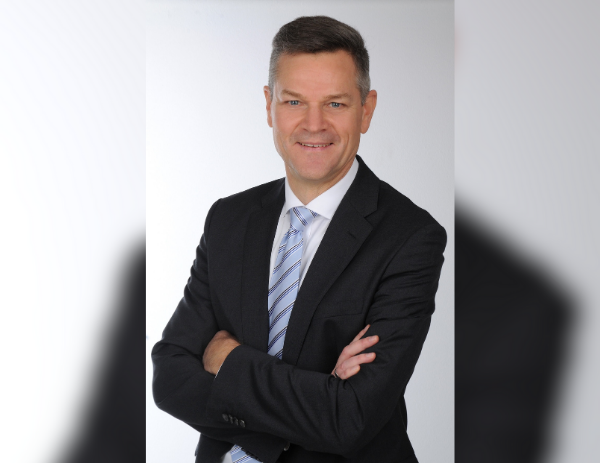
An interview with Dr Richard J. Vestner, Senior Director, Digital Solutions at Bentley Systems, a software development company that provides solutions for infrastructure design, construction, and operations, to talk about infrastructure in Dubai and the future of engineering.
TechX: What’s driving the engineering and infrastructure sector in Dubai in terms of new technologies, and what is the future of engineering?
Richard: The engineering and infrastructure sector of Dubai is currently expanding at an accelerated pace, particularly owing to the increased focus of Dubai’s government in this sector. In the past few years, the emirate’s government has invested billions to transform and develop Dubai’s infrastructure to support its overall economic growth. In 2016, the emirate had approximately 4,000 active infrastructure projects, which was worth AED 1.15 trillion, with a major share of projects in the urban construction sector. According to Frost & Sullivan, Dubai’s government allocated nearly 17% of its budget for infrastructural development in 2017. International events like Expo 2020, which welcomed visitors from across the globe to Dubai, and the emirate’s goal to advance the transportation network to provide a state-of-the-art experience for citizens, as well as travellers, have steered the integration of modern technologies into the engineering sector. Furthermore, in line with Dubai’s ambitious vision to retain its position as the leading trading hub, the city has been developing its road, port, and air infrastructure to meet global standards. The best example of the influx is seen in the vehicle population in the United Arab Emirates, which had grown at a rate of 8% recently. The future of the engineering sector in the region is poised to be driven by the integration of the metaverse, augmented reality (AR) and virtual reality (VR), artificial intelligence (AI), machine learning (ML), digital twins, automation, and remote operations.
TechX: Since you mentioned Digital Twins: Please tell us more about this and how they can manage the complex lifecycle of today’s modern infrastructure.
Richard: We define a digital twin as a digital and dynamic representation of a physical asset, facility, or system, which allows better and faster decisions, resulting in improved results. The keyword is dynamic, not a static model like building information modelling (BIM). These technologies enable us to smoothly synchronise the work of the cyber and physical worlds. One of the most important characteristics of digital twins is the capacity to support two-way communication, which makes it a foundation technology for Industry 4.0 by providing predictive feedback to the real world and establishing cyber-physical systems. Our digital twin solution integrates engineering, operational, and information technology systems for the infrastructure sector and helps to view the asset, monitor change, and carry out analysis to better comprehend and optimise the operations of the asset and process. Digital twins have emerged as a crucial tool for facilitating cooperation across numerous departments, disciplines, and geographic distances considering the industry’s changing requirements. We can witness the potential of digital twins to revolutionise the infrastructure sector as we regularly monitor regional market trends.
TechX: We all know Climate change is real and it’s quite evident with the severe weather conditions we are witnessing globally, can digital twins play any role in strengthening urban resilience or solving these challenges?
Richard: I believe that no organisation alone will be able to meet the transformational demands, specifications, and possible applications needed to comprehensively address global climate change. The United Nations has established a series of Sustainable Development Goals (SDGs) to address the concerns that climate change poses and reduce related hazards. An infrastructure digital twin needs the context of its environment to support the achievement of SDGs, particularly to boost climate action and decarbonization. To effectively manage climate risk, infrastructure digital twins must encompass constructed assets, as well as their physical and spatial interdependencies with the surrounding environment and ecosystems. All the disciplines involved in planning, designing, constructing, and maintaining infrastructure are impacted by SDGs. In fact, it is advantageous for companies that decide to use an open strategy while choosing their infrastructure digital twin technologies because it provides flexibility, interconnection with multiple disciplines, collaborative innovation, and resilience.
TechX: With smart cities coming up globally, how can digital technology simplify urban planning and processes?
Richard: Digital technologies are currently making their mark in several fields of the infrastructure sector. If you look closely, you can see that digital technologies are used in today’s asset lifecycle at every stage. Businesses are leveraging these technologies to draw conclusions from data and to make procedures simpler or even automated. Digital twins have several applications in the context of smart cities. The technology’s potential may be used, for example, as a citywide decision support and automation tool or in a variety of verticals, including energy, mobility, and water management. The huge volume, diversity, and maturity of data that exist are indicators of the size of opportunities harnessing it and the technologies that digital twins provide.
TechX: What is the best advice for companies to tackle urban carbon emissions?
Richard: Technologies like digital twins have immense potential in this regard. The capacity of Bentley’s digital twins to incorporate processes for lifecycle assessment (LCA) and embodied carbon calculation capabilities inside its iTwin Platform is one example of how they serve the SDGs of infrastructure projects. The Bentley iTwin Platform is an open, scalable cloud platform that enables the development, visualisation, and analysis of infrastructure digital twins utilising engineering data in various forms produced by various design tools without disturbing existing norms or procedures. The best advice that can be offered to businesses to reduce urban carbon emissions is to introduce flexibility into these technologies. Urban digital twins must be highly flexible, as there are many applications and legacy systems already in place. One cannot expect a user company to just switch to another solution or completely exchange running systems. To connect and integrate, there must be interfaces, connectors, and APIs, as well as a partnership mentality.